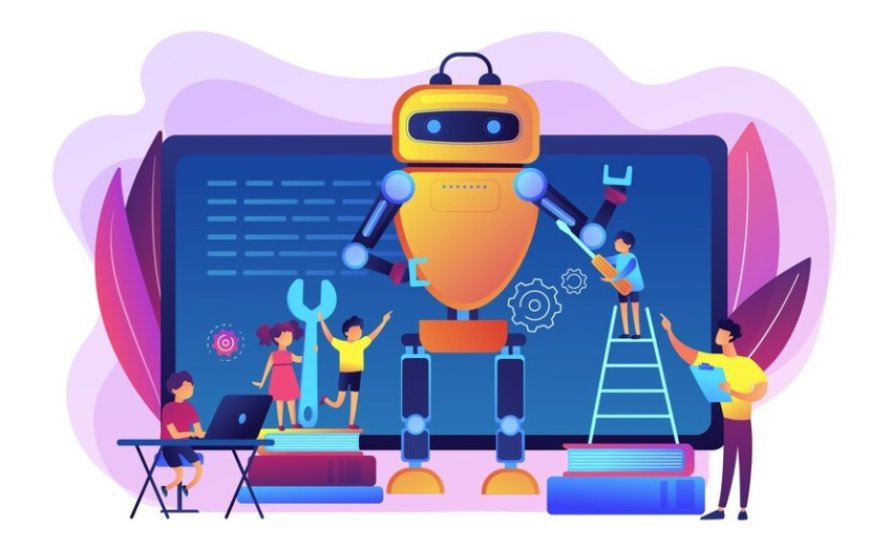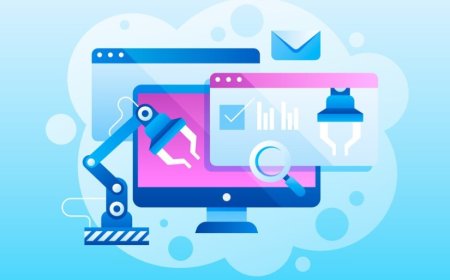Machine Learning for Natural Language Processing
The power of Machine Learning for Natural Language Processing (NLP) with our comprehensive guide. Learn NLP concepts, techniques, and applications.

In today's tech world, we're surrounded by all sorts of devices and apps that understand and talk to us. Think about Siri, Google Assistant, and chatbots on websites—they all use something called Natural Language Processing or NLP. It's like teaching machines to understand human language.Machine Learning is a super important part of making NLP work better. It's like teaching these machines to learn and get better at understanding what we say or write.
Right now, the way our devices and apps understand and talk to us is pretty amazing. They can answer our questions, translate languages, and even write emails for us. All this magic happens thanks to something called Natural Language Processing or NLP.
NLP is like teaching computers to talk like humans. Imagine you ask your phone for directions, and it gives you the right answer. That's NLP at work. It's a big deal in technology!
Role of Machine Learning
Machine Learning is like teaching computers to learn from the things they do. For example, think about how a baby learns to speak by hearing and practicing. Machine Learning is a bit like that, but with computers.
In NLP, Machine Learning helps make things even better. It's like teaching your phone or computer to understand your words and sentences more accurately. It learns from the way you talk and write, so it can give you the best responses.
So, the main idea is that NLP and Machine Learning are like a fantastic team. NLP helps computers understand human language, and Machine Learning helps them get really good at it. This combo is making our digital world smarter and more helpful every day.
Challenges in NLP and ML Integration
One big challenge is that human language is really complex. We use slang, idioms, and sometimes say things in a way that might not make sense if you take the words literally. Teaching a computer to understand all these nuances is like teaching a pet new tricks—it takes time and patience.
Another tricky part is having enough good examples for the computer to learn from. Imagine trying to teach a robot to play a game, but you only have a few minutes of someone else playing. It wouldn't know all the moves. Similarly, in NLP, having enough diverse and high-quality examples is crucial for the computer to learn well.
Then there's the fairness factor. We want these computer systems to treat everyone fairly, no matter who they are or where they're from. But sometimes, the way the computer learns can accidentally lead to biases. It's like if you taught a dog to fetch a ball, but it only brought it back to you and not to other people. That wouldn't be fair, right? We want to make sure our computer systems are fair to everyone.
So, you see, even though NLP and Machine Learning are amazing, there are some puzzles to solve. But the cool thing is, lots of smart people are working on these challenges to make our digital interactions even better and more inclusive for everyone!
How can machine learning be leveraged for text classification?
Machine learning techniques in NLP
In Natural Language Processing, machine learning techniques are like the secret sauce that helps computers understand and work with human language. One way they do this is by using something called supervised learning. It's a bit like teaching a dog new tricks. You show the computer lots of examples of text and tell it which category they belong to. It learns to spot patterns, like which words or phrases are connected to each category. So, when you give it a new piece of text, it can say which category it fits into. This is super helpful for tasks like sorting emails into spam and not spam.
Another cool technique is unsupervised learning. It's like finding hidden groups among things. Think of it as sorting your toys into groups without knowing the names of the groups first. In NLP, this is used for tasks like finding topics in a big pile of text. It's like magic—making sense out of a jumble of words!
And, there's deep learning. This is like giving the computer a big brain. It's super useful for understanding the order of words and how they're related. This helps with tasks like translation and answering questions. Deep learning models, such as transformers, have made NLP even smarter!
Data preprocessing and feature engineering
Data preprocessing is all about getting text data ready for the computer to work with. It's like cleaning up a messy room so you can find things easily. First, you break the text into smaller pieces, like sentences or words. It's like turning a big puzzle into smaller, solvable parts.
Then, you remove things you don't need, like punctuation and numbers. This leaves you with just the words and sentences. After that, you figure out what's important. You count how often words appear or group similar words together. It's like sorting your clothes by color, making it easier to pick what to wear.
Feature engineering is like giving the computer extra clues. You might tell it that some words are more important than others, or that certain patterns mean something special. It's like teaching your dog that when you say "sit" and show a hand signal, it should sit. In NLP, these engineered features help the computer make better sense of the text.
Bias mitigation and fairness considerations
Fairness is like making sure everyone gets a fair shot in a game. We want computers to be fair, too. But sometimes, the way they learn from data can accidentally make them unfair. It's like if your friend taught your dog to only listen to them and not to you. That's not fair, right?
To fix this, we use diverse data to teach the computer. It's like showing the dog that it can listen to anyone. This helps the computer learn to be fair to different groups of people. We also keep an eye on the computer's decisions. If it's doing something unfair, we can tell it, "Hey, that's not right," and it can learn to do better next time. It's like coaching a sports team to play fair.
Model training and fine-tuning
Training and fine-tuning are like teaching your dog new tricks. First, you show it what you want it to do. In NLP, this means giving the computer lots of examples of text and telling it what's right and wrong. It's like showing your dog how to fetch a ball and rewarding it when it gets it right.
Once the computer learns the basics, you can fine-tune it. It's like giving your dog advanced training to become even better at fetching the ball. In NLP, you use specific examples to make the models really good at a particular task, like translating languages or answering questions. It's like teaching your dog to do fancy tricks, like jumping through hoops. With time and effort, these models get better and can do amazing things!
In this guide, we've learned how computers use Machine Learning to understand human language through Natural Language Processing (NLP). We discussed machine learning techniques, data cleanup, and fairness in NLP models, making it all simpler to understand.
The world of Machine Learning for NLP is always changing and improving. As we continue to explore this exciting field, we'll see even more ways that computers can make our digital lives better. So, let's keep encouraging curious minds to dig deeper and discover new things in the ever-evolving landscape of NLP and Machine Learning. The future is bright, and there are countless possibilities waiting to be explored and turned into reality!





































